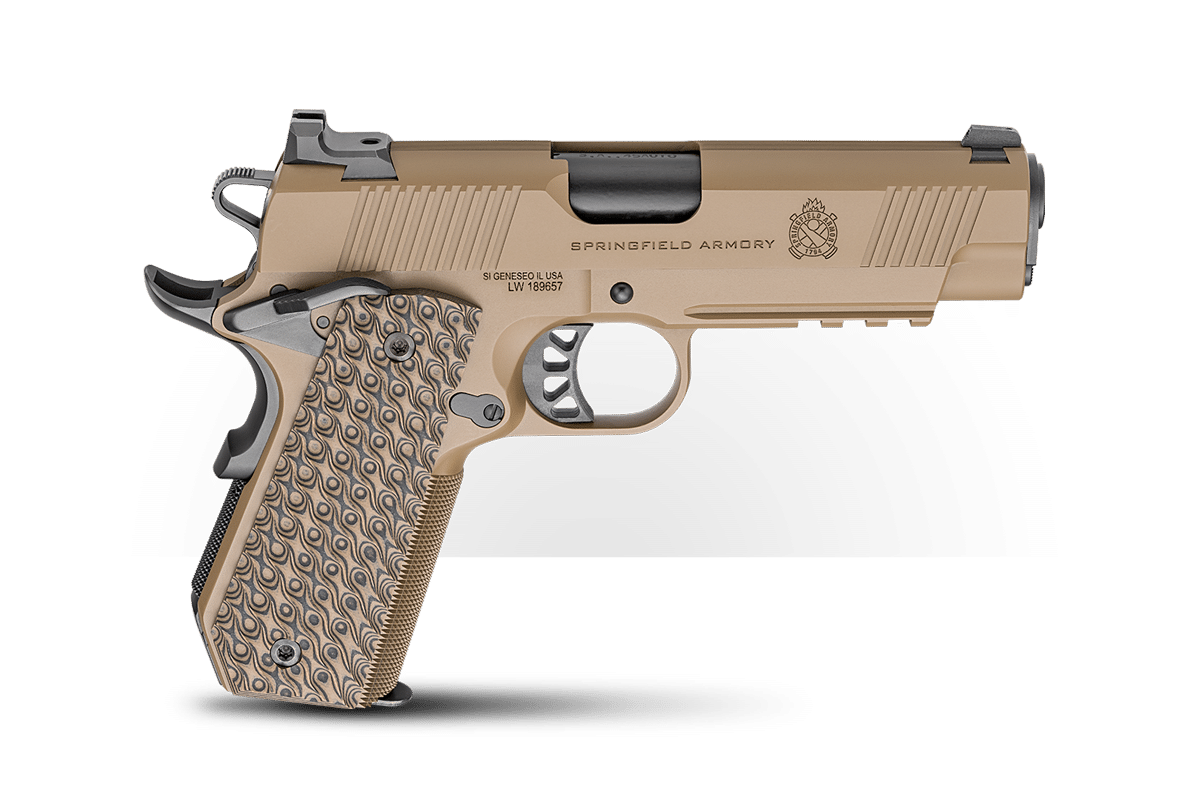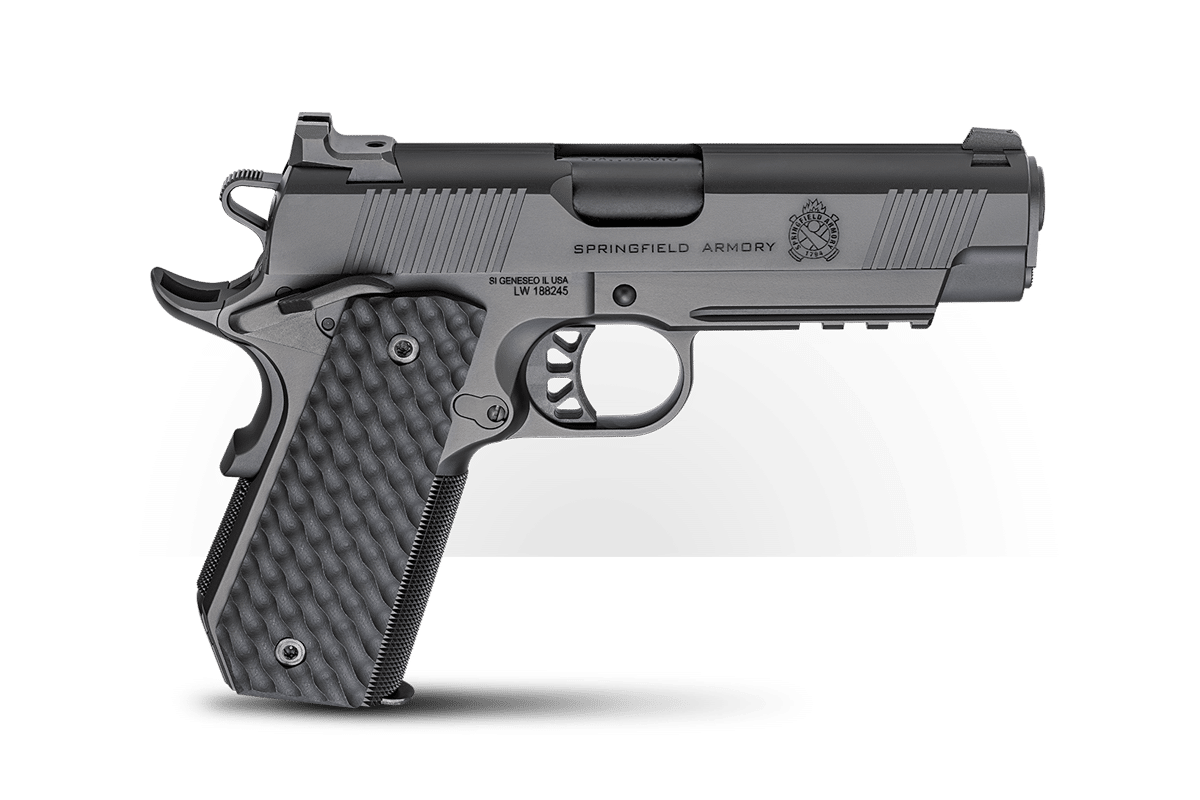If you have ever concealed-carried a full-size 1911 on your hip, you know how easily it can print. The rear of the grip on a 1911 — that bottom edge — can provide the telltale clue you are packing some heavy equipment.

Of all the alterations the 1911 has undergone since the platform’s conception, a popular one for an EDC variant is to lop off the rear corner of the bottom of the grip frame. Springfield Armory calls this modification “Carry Contour,” or CC for short. Removing that hard edge on a 1911 dramatically changes the pistol’s ability to be concealed since there is less grip to print.
What Does “Printing” Mean?
The term “printing” refers to the visible outline of a weapon through someone’s clothing. If that bulge or outline of your concealed carry handgun can be seen, you have a problem.
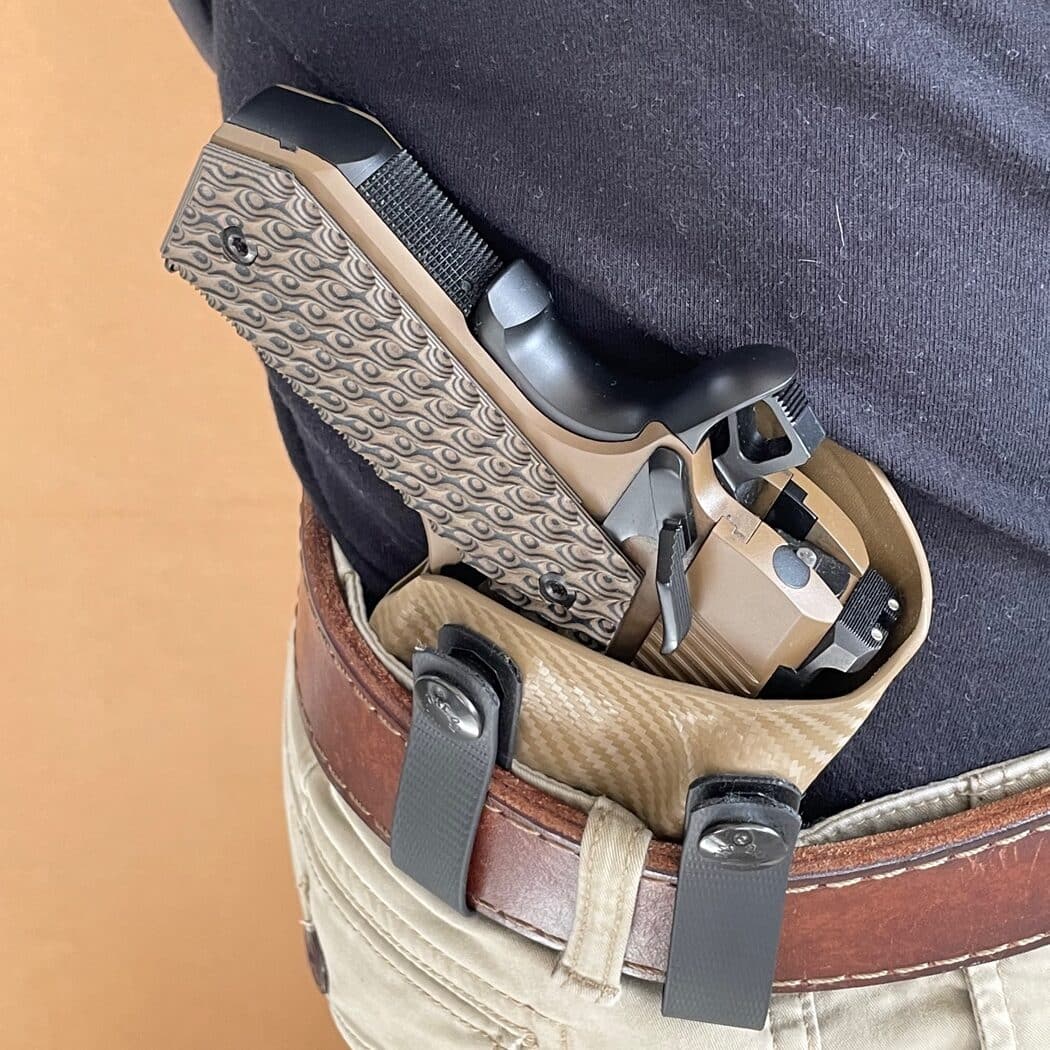
To avoid this, the idea is to wear loose-fitting clothing. While this might pass the mirror test when you look at yourself in a mirror before you head out for the day, it does not tell the whole story. While it might not show when you are standing, what about when you sit, walk, bend over, close the hatch to your SUV, place groceries in the trunk, etc.? The result is that some time or another, your gun might print or even be visible in your holster.
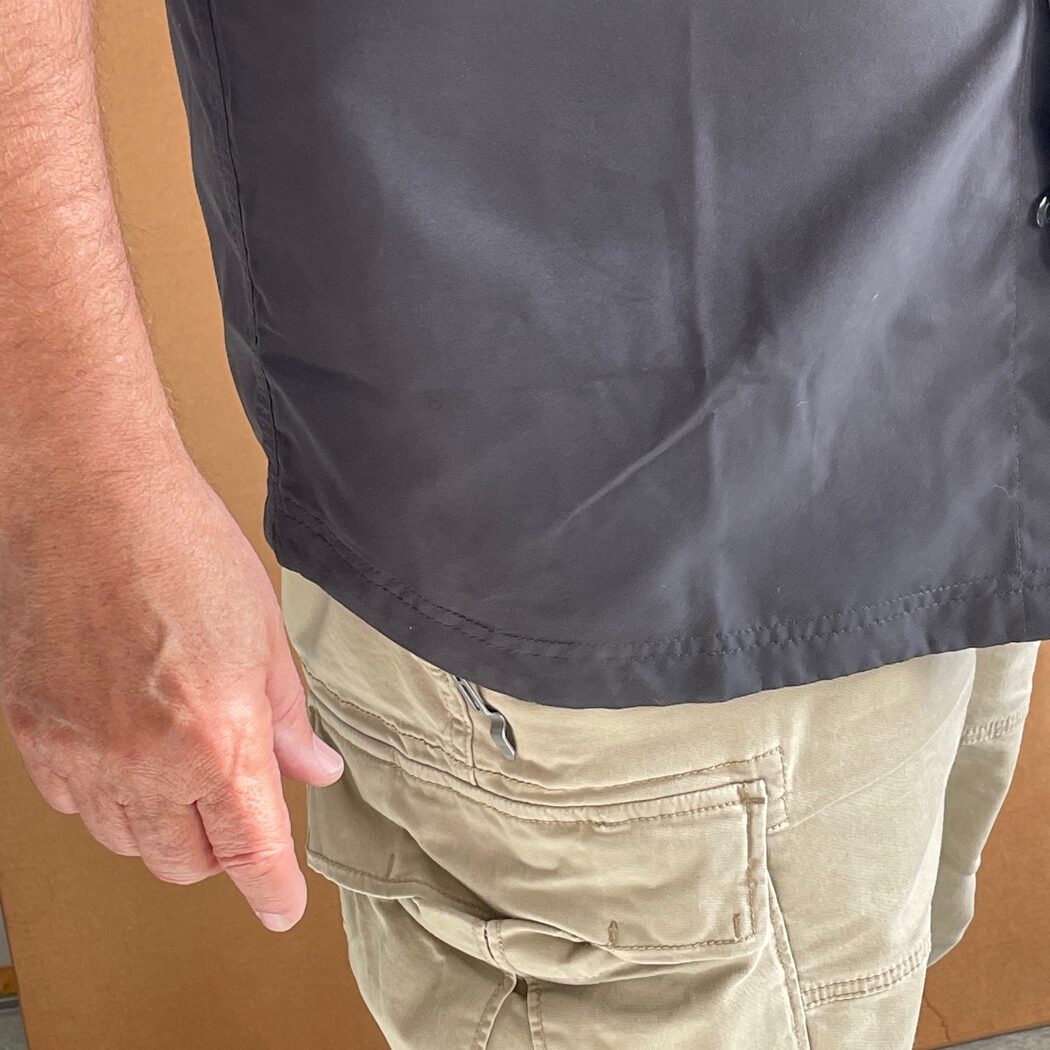
The reality is that you cannot always eliminate printing. Luckily, the vast majority of the time no one will notice. However, it is important to do everything you can to keep your firearm concealed.
Concealing a small, sub-compact or compact pistol is easy. It’s harder when you try to conceal a duty-style pistol like a 1911.
Carry Contour Pistols
The TRP might not be the first thing you think of when it comes to CCW, but I am glad Springfield did. Packing all that duty-grade performance into a gun that can be carried concealed for self-defense is a wonderful option.
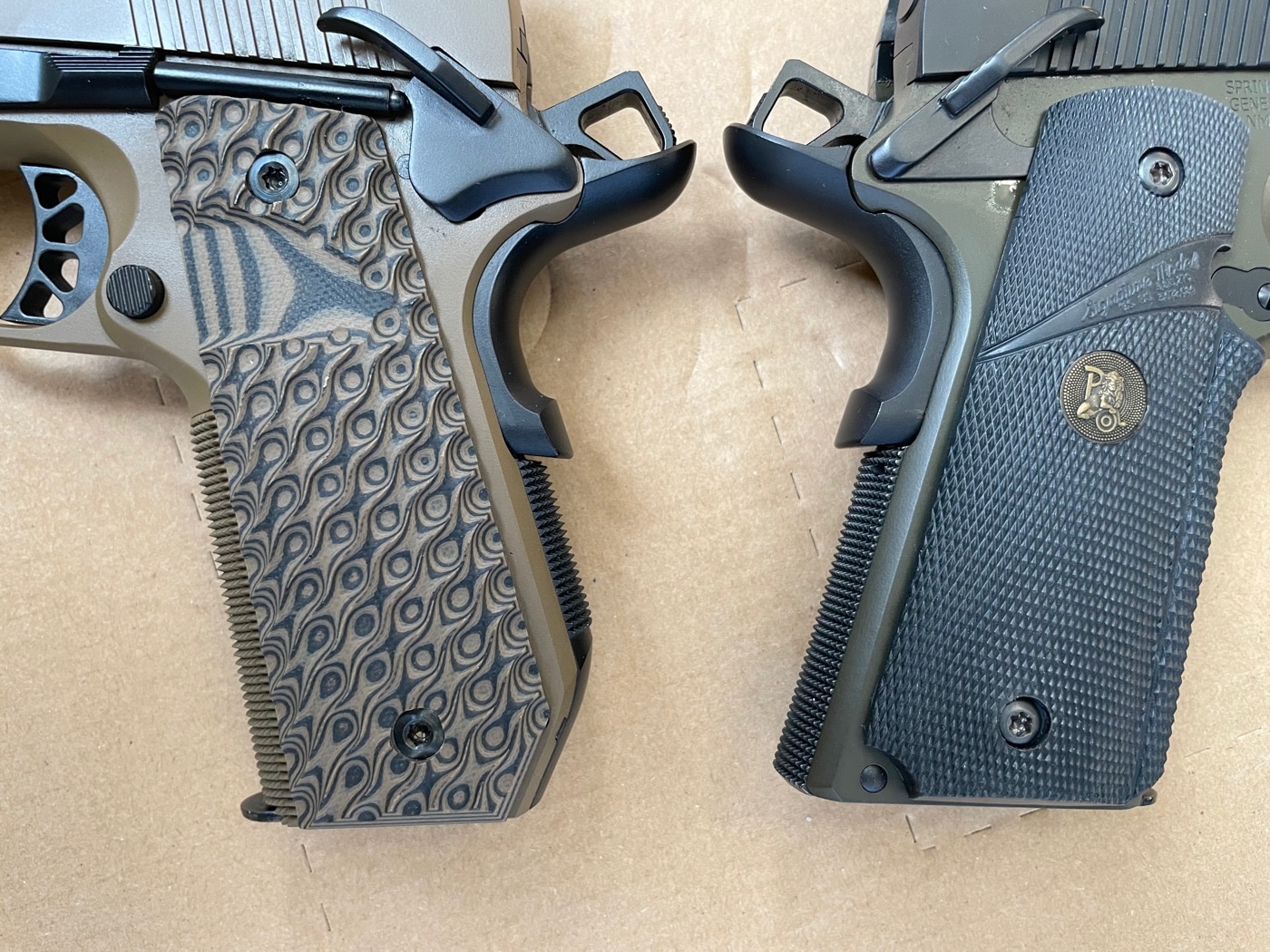
As a result, Springfield rethought the TRP for EDC, producing it with a 4.25” barrel and lightweight forged aluminum frame. And as noted earlier, Springfield went a step further and bobbed a portion of the frame.
While removing this portion of the grip helps to reduce printing, it still provides a full and comfortable grip. In the hand, the CC TRP is comfortable to both shoot and draw. The Carry Contour grip curves away from the palm so, in recoil, there is no sharp edge to jab the heel of your hand.
To Bob or Not to Bob
Shooting a CC 1911 is different. The difference that is not so much a stark contrast, but rather more like a nuance. The CC has a different feel, with the end of the grip being more in the palm of your hand compared to the heel of your hand as with a standard grip 1911.
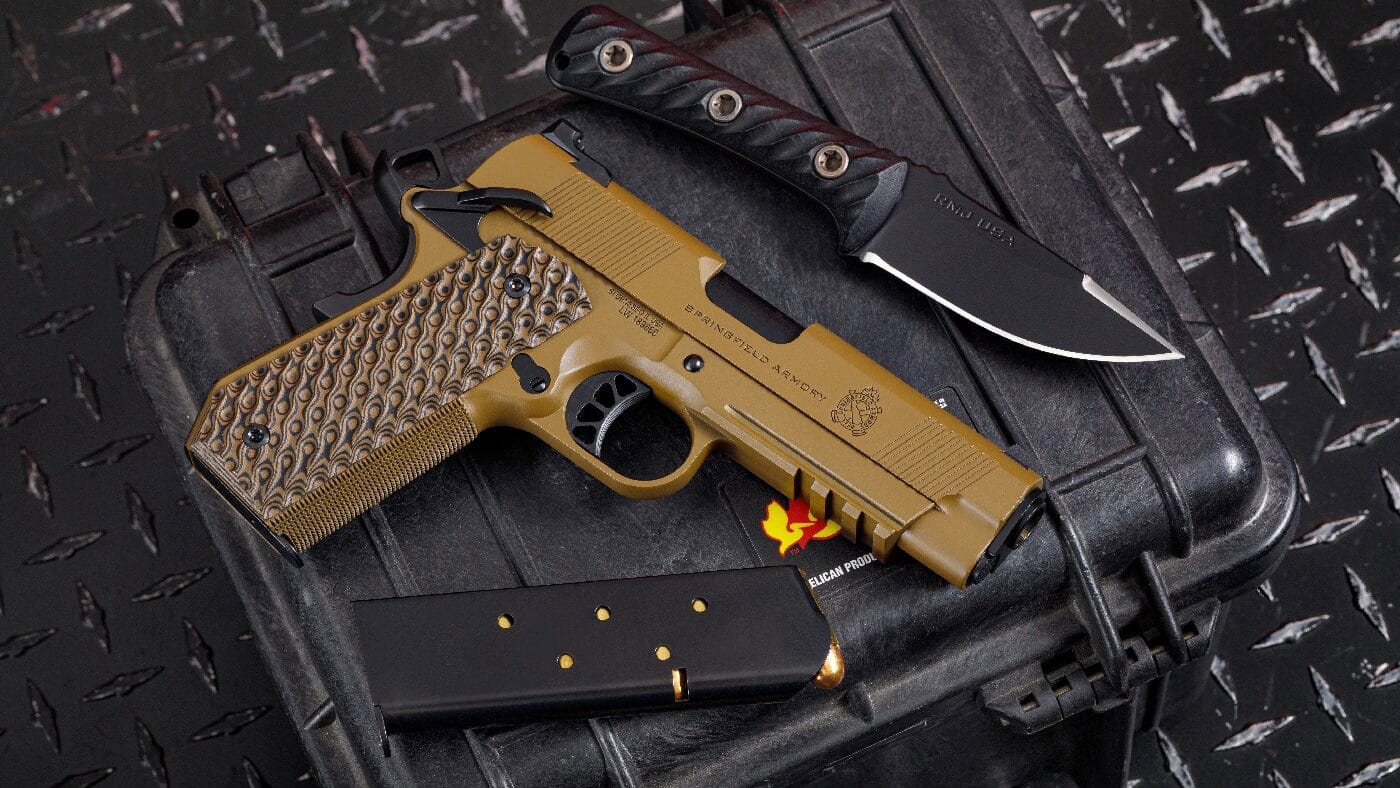
Running the Carry Contour, I did not see much difference in perceived recoil. The gun stayed in place mostly due to the super toothy 20 line-per-inch checkering on the front grip strap and mainspring housing. Combined with the aggressively textured VZ Hydra G-10 grips, the pistol feels like it’s duct-taped to your hand.
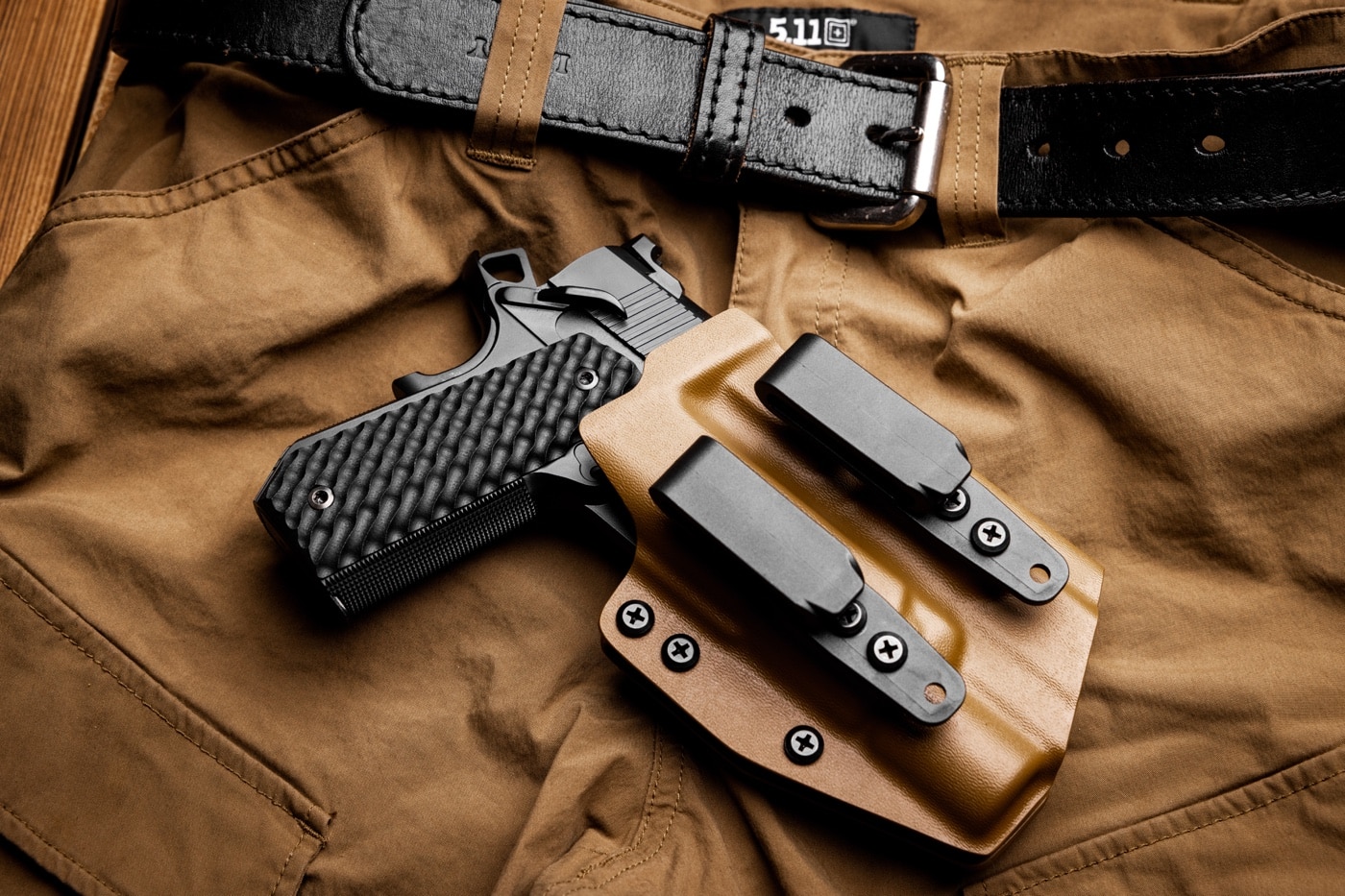
I found reloading the Carry Contour was the same as reloading a traditional full-grip 1911. Even with the edges of the magazine well nicely chamfered, it takes repetition and practice to smoothly and quickly reload the single-stack magazine. Those of you accustomed to the large mouth of a double-column magwell like a Hellcat will need to practice a bit with this one, like any single-stack 1911.
Conclusion
The grip of traditional 1911 is timeless. A 1911 with a lobbed off frame means a reduction in weight, reduced risk of printing when concealed, and — if my experience with it means anything — no loss of performance.
Springfield Armory’s TRP 4.25” Carry Contour is a better way to conceal carry a 1911.
Editor’s Note: Please be sure to check out The Armory Life Forum, where you can comment about our daily articles, as well as just talk guns and gear. Click the “Go To Forum Thread” link below to jump in and discuss this article and much more!
Featured in this article
The post The Carry Contour TRP: Less Grip to Print appeared first on The Armory Life.
